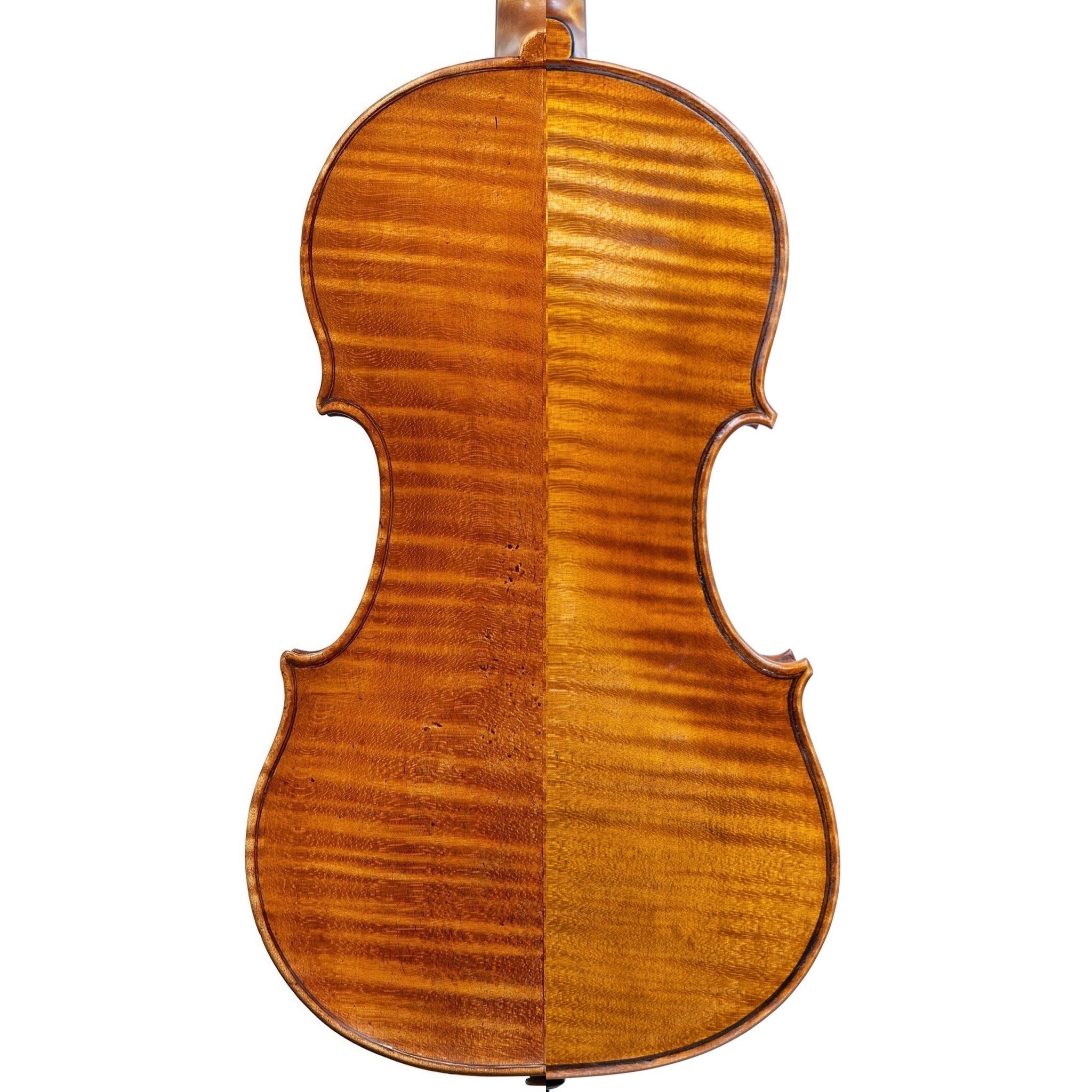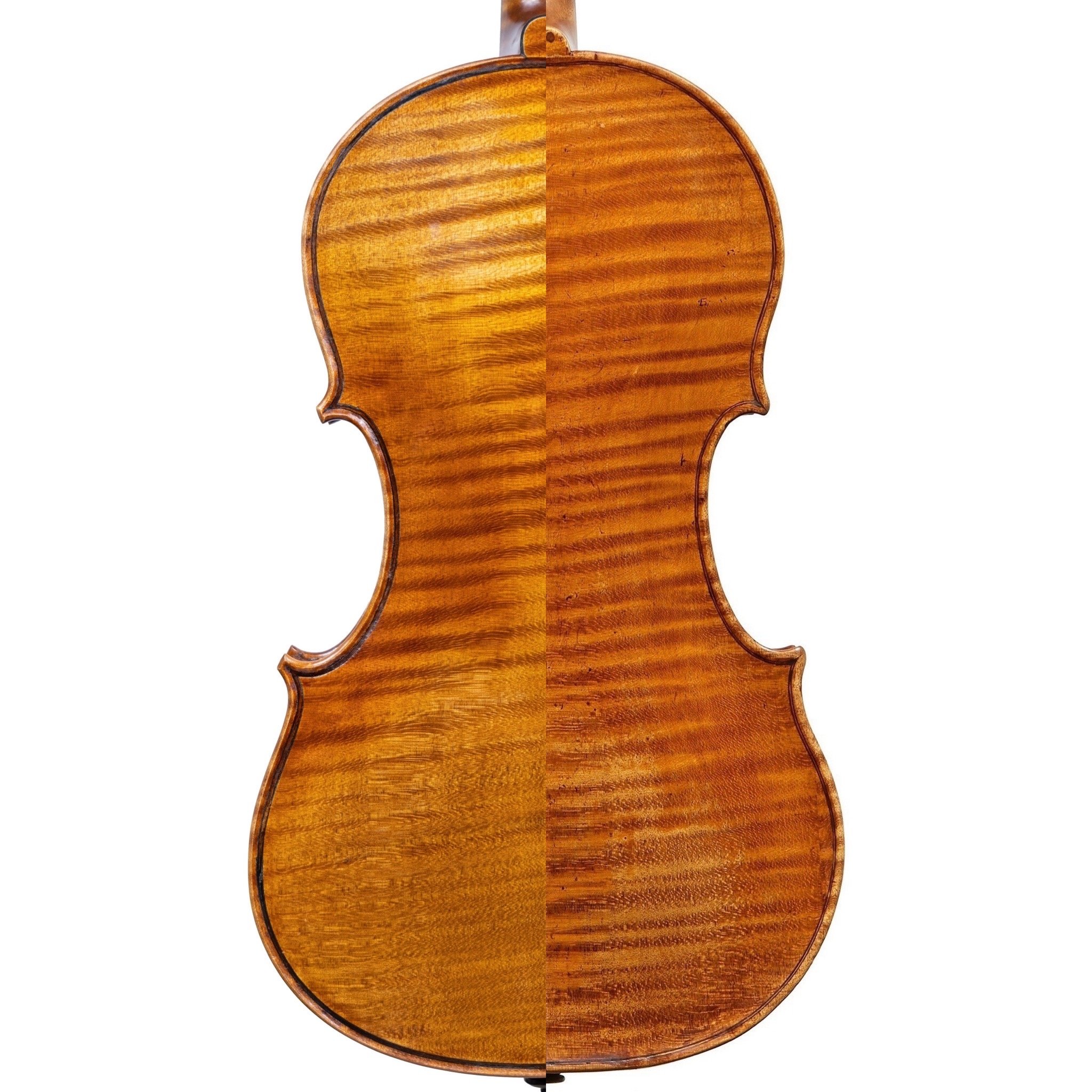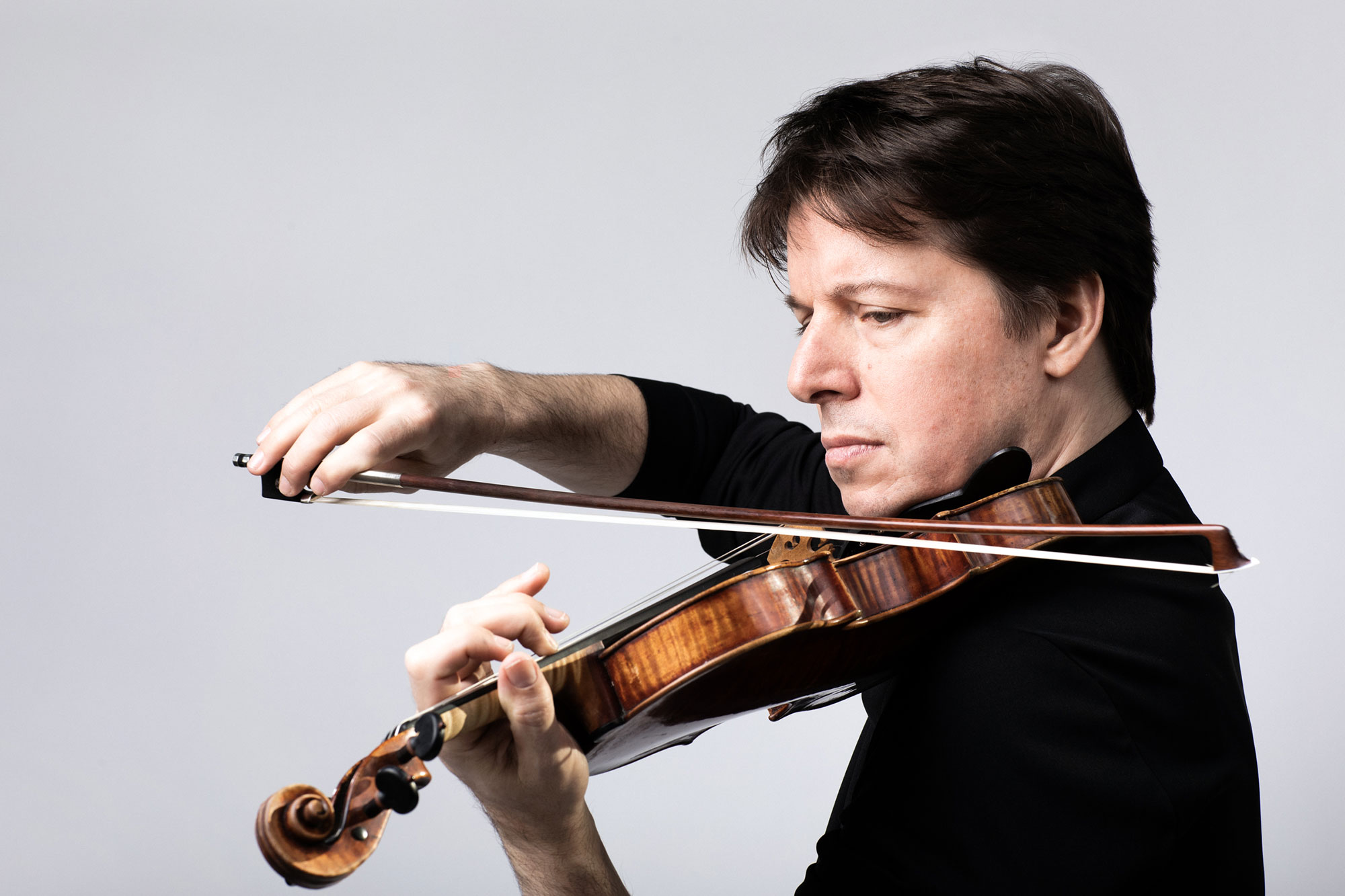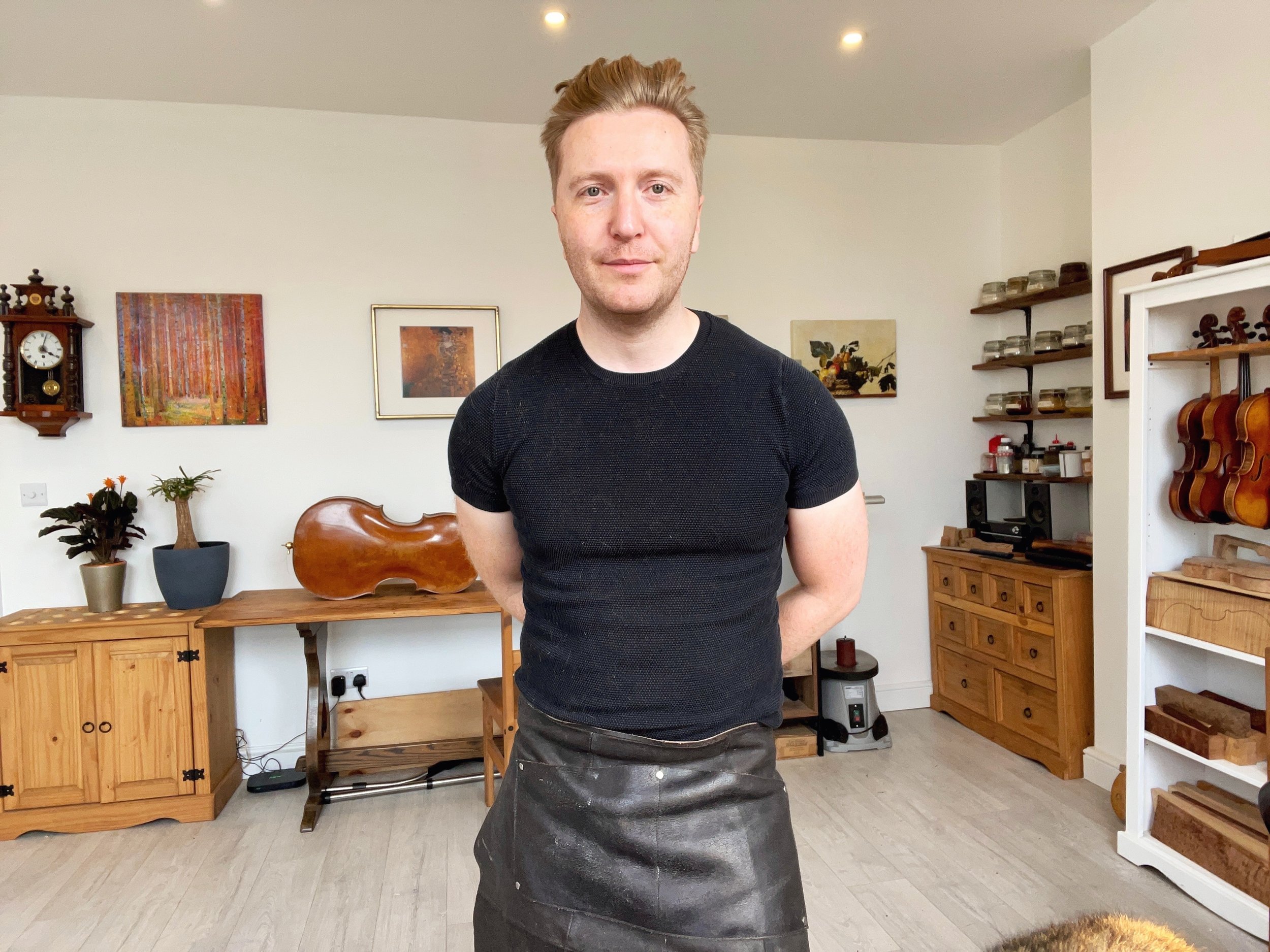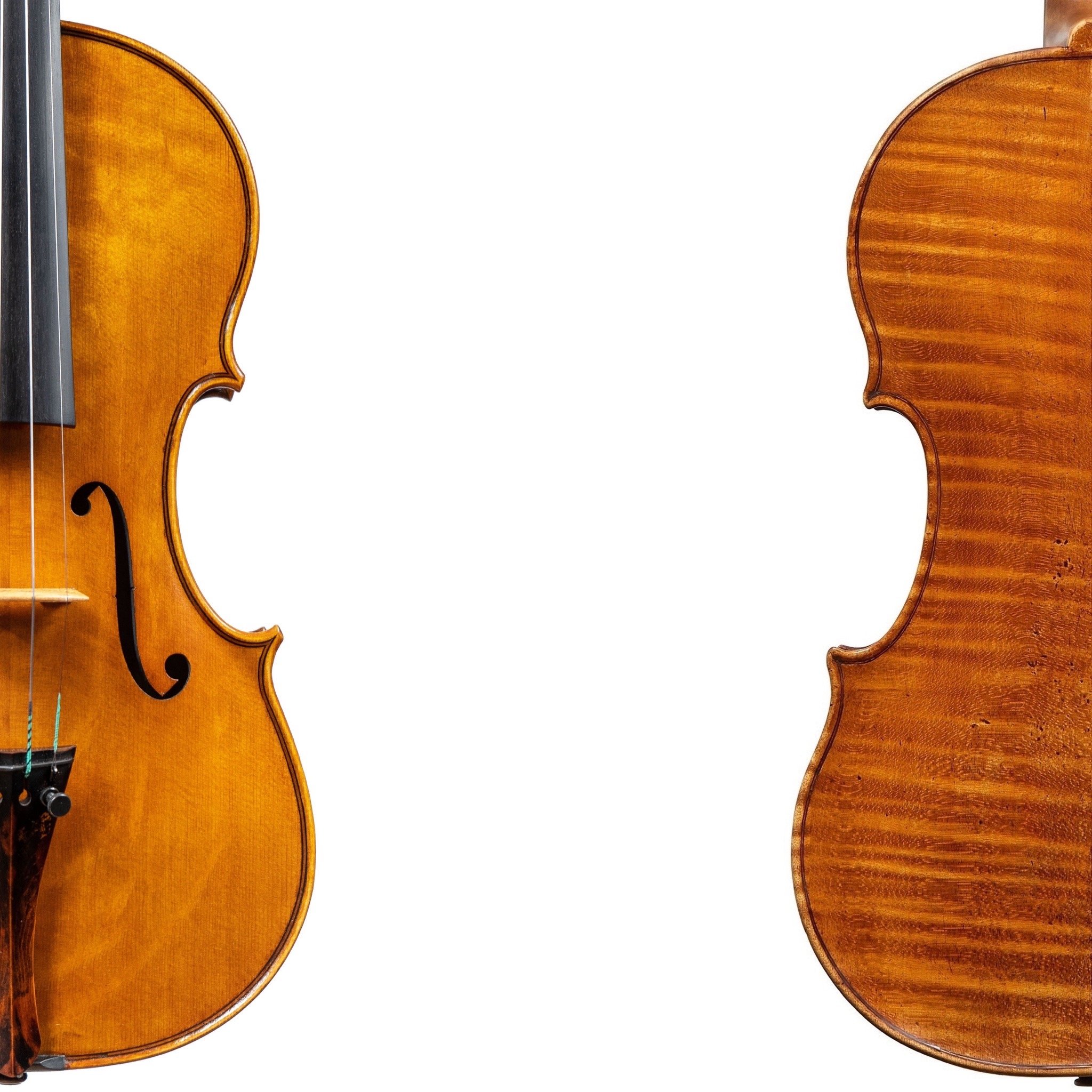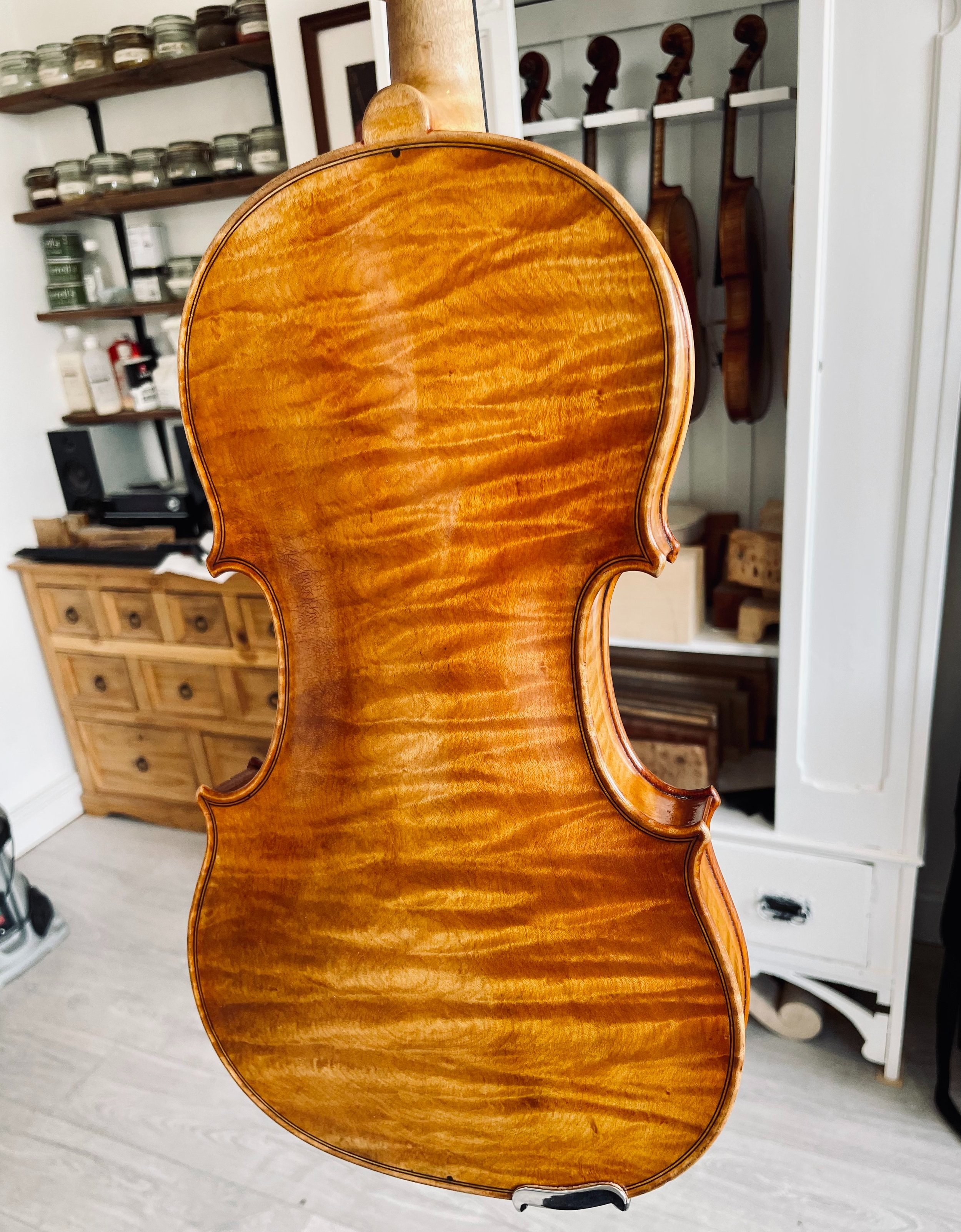Buying a Professional Contemporary Violin
Five things to consider when choosing a new violin by a modern luthier.
We have put together this useful how-to guide on the most important things to consider when buying a professional contemporary violin. From the type of sound you are looking for, to the quality and playability of the violin and speaking about your requirements with the maker.
1: The Sound
“The instrument should be able to speak”
The violin you choose should be one that you can express yourself with easily. Each instrument has its own character and choosing one that matches your temperament and individuality is very important. Whether you like dark and rich or bright and focused, with everything in-between, there is a violin for every player out there.
Exploring the instrument all the way up and down each string is a good way to find out what its capabilities are. Some violins have very strong lower strings, others shine in the higher registers and some are very balanced between all four. Finding a violin that works well in all registers is ideal.
It is also important to test the limits of the violin. Trying to play very softly to see if you can get the instrument to respond with ease is a good idea. The instrument should be able to speak with minimal effort. Equally, pushing into the instrument to test its volume and projection is important, as you will sometimes want to be heard clearly. The violin’s sound will need to be able to carry in every environment.
A violin with a wide range of colours and possibilities is a good choice as it will suit many repertoires.
2: The Playability
“… so effortless that you should enjoy playing all the way up and down the fingerboard...”
Being able to play the violin easily is of paramount importance. Not only will you perform better but you will want to pick up the violin more and more simply because it is so much more enjoyable an experience.
We always say to customers that playing should be so effortless that you should enjoy playing all the way up and down the fingerboard, in every key.
When looking for your new violin, make sure that you are able to push down onto the fingerboard easily all the way up the string. This is more easily noticeable in the higher positions. If the violin has been set up well, it should be comfortable to play right the way to the end of the fingerboard.
Try playing the strings individually, seeing if you can play them all the way up without touching the others. A good test for this is to play high up on the D string, seeing whether you touch the G or A, then, playing high up on the A string to see if you touch the D or the E.
You will be able to tell if a violin has been made by a good luthier if the set up has been done well and it is easily playable.
3: The Luthier
“A bespoke service from the maker of the violin will ensure it is tailored just for you.”
Buying a contemporary violin directly from a professional, certified luthier will ensure that the violin has been cared for, documented and is in good sellable condition.
Visiting the maker themselves when buying a violin is always preferred, if at all possible. The maker will know all the intimate details of how the instrument was constructed, where the wood is from, the thicknesses and model used. These are just some of the details that shops do not always know, their having just a basic understanding of the violin and the making process.
The maker may offer aftercare services which are hugely beneficial to the player long-term. These services may include sound adjustments, replacing parts if necessary, or offering repairs that make sure the violin is in its best condition through the years.
A bespoke service from the maker of the violin will ensure it is tailored just for you.
4: Original or Copy?
“Originals, made using the same classical techniques of the great old masters…”
When buying a contemporary violin it is important to ask; is it an original or a copy?
Depending on your stylistic and aesthetic choice, you may prefer either a violin which is a copy of a classical instrument or an original made by classical methods by a professional luthier. While it is perfectly acceptable for luthiers to make copies, they will always be imitations of better instruments.
Copies may be just simple replications of an original violin’s dimensions, or fakes as well, with faux scratches, dirt, varnish wear and other tricks to pretend the violin is older than it is.
Originals, made using the same classical techniques of the great old masters such as the Amati, Stradivari, Guarneri or Guadagnini families, will be much more unique instruments. If made by professional, knowledgable luthiers who use the same methods as the great Cremonese makers whilst not copying them, original violins can be much more sought after.
5: The Value
“A good violin should last a lifetime…”
The value of a contemporary violin will depend on who has made it, when and how in-demand the luthier is. It is a good idea to compare the sale value of an instrument with those out there by the same maker to be sure that it is being sold around the same price.
Buying directly from the maker or shop where the violin was made, if possible, will be better value. Dealers and shops that sell other people’s instruments will often add commission and other charges on top, based on where their shop is located.
Having an idea of a price range is a good plan, then trying a few violins in that range to make a good comparison for value. It’s good to see what is available for your budget.
Generally, violins will go up in value over time and, if sold at the right price, can be very good investments. A good violin should last a lifetime and be handed down the generations, if made by a professional, well-renowned luthier.

